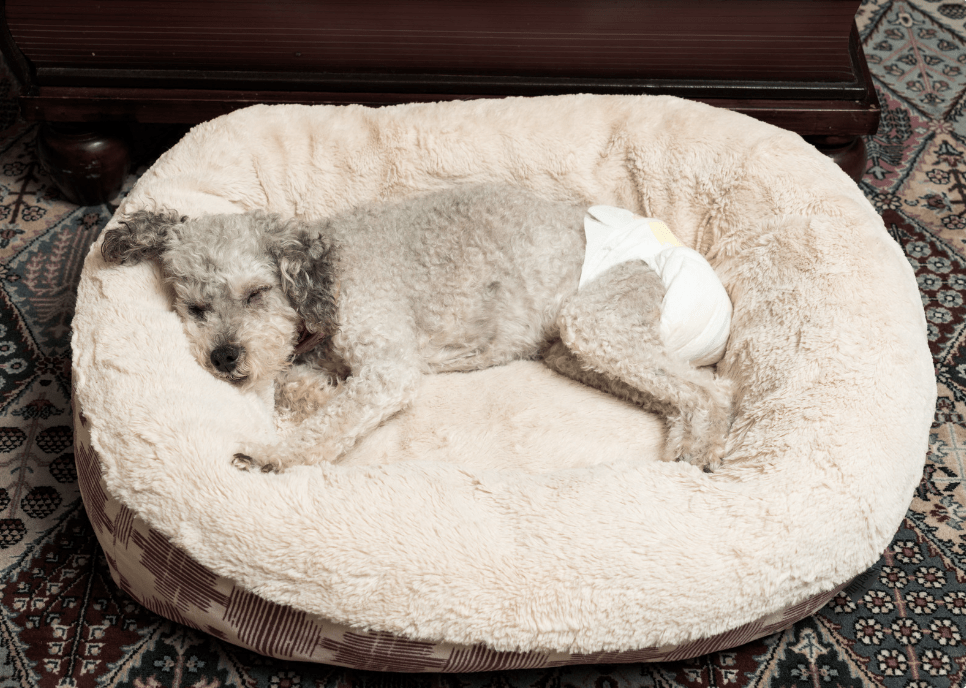
Caring for a Diaper Dog
Caring for a dog with incontinence, or a “diaper dog,” is an experience filled with unconditional love, dedication, and profound rewards. While the initial thought of managing a pet’s incontinence might seem daunting to some, those who have embraced this journey know that it isn’t as challenging as it may seem once you get the hang of it. To make the learning process go a little quicker for those that are new to diaper dogs, we put together a detailed guide on how to effectively care for your diaper dog.
Understanding Incontinence in Dogs
Incontinence in dogs can be caused by various health issues, including spinal injuries, urinary tract infections, or age-related changes. It’s important to work closely with a veterinarian to understand the underlying cause of your dog’s incontinence to tailor the care and management accordingly.
Selecting the Right Diapers
Choosing the right diaper is crucial. Diapers should be highly absorbent, fit snugly without causing discomfort, and be easy to change. There are several types available, including washable cloth diapers and disposable ones. It may require some trial and error to find the right type and size that works best for your dog, but once you find the perfect fit, everything else gets easier!
Maintaining Skin Health
Diaper dogs are prone to skin irritations and urinary tract infections. To prevent these, it’s essential to change diapers frequently, ideally every 3-4 hours, and more often if they’re dirty. Clean the dog’s diaper area with a gentle, hypoallergenic wipe to remove urine or feces, which can irritate the skin if left for long periods of time. Applying a barrier cream can also help protect against moisture.
Regular Veterinary Check-ups
Frequent vet visits are vital to monitor the health of a diaper dog and manage any complications from incontinence. Your vet can provide guidance on the best hygiene practices and recommend products that can help manage incontinence more effectively.
Creating a Comfortable Environment
To improve quality of life, ensure that your dog’s living area is comfortable, clean, and safe. Use waterproof bedding and have several changes available to keep the area dry and hygienic. Pro Tip: Put a blanket or towel down over your dogs bed for an easy clean up if an accident occurs over night.
Community and Support
Connecting with a community of pet owners facing similar challenges can provide emotional support and practical advice. Online forums and local pet support groups are invaluable resources for sharing tips and experiences regarding incontinence care.
Training and Adaptation
Training a diaper dog to be comfortable with diaper changes and routine care is important for their well-being. Use positive reinforcement to help them adapt to their new routine, which can include treats and plenty of praise during and after diaper changes.
Emphasizing Quality of Life
Despite the challenges, it’s important to focus on enhancing your dog’s life through regular exercise, play, and affection. Adapt activities to your dog’s comfort and health status, ensuring they remain engaged and happy.
Resilience and Emotional Impact
Caring for a diaper dog may come with its set of challenges, but the love and joy that these special pets bring into our lives are immeasurable. They teach us about unconditional love, patience, empathy, and resilience. Our adoptable dog Sergeant is a perfect example of this. Despite needing a diaper, he continues to love, play, and enjoy his life to the fullest. His ability to adapt and find joy, regardless of the circumstances, is a powerful reminder of his strength of spirit.
So, to those who open their hearts and homes to a diaper dog, know that the journey, though filled with unique challenges, is also brimming with moments of pure love and profound life lessons. By focusing on tailored care and emotional connection, both you and your dog can enjoy a fulfilling life together.
